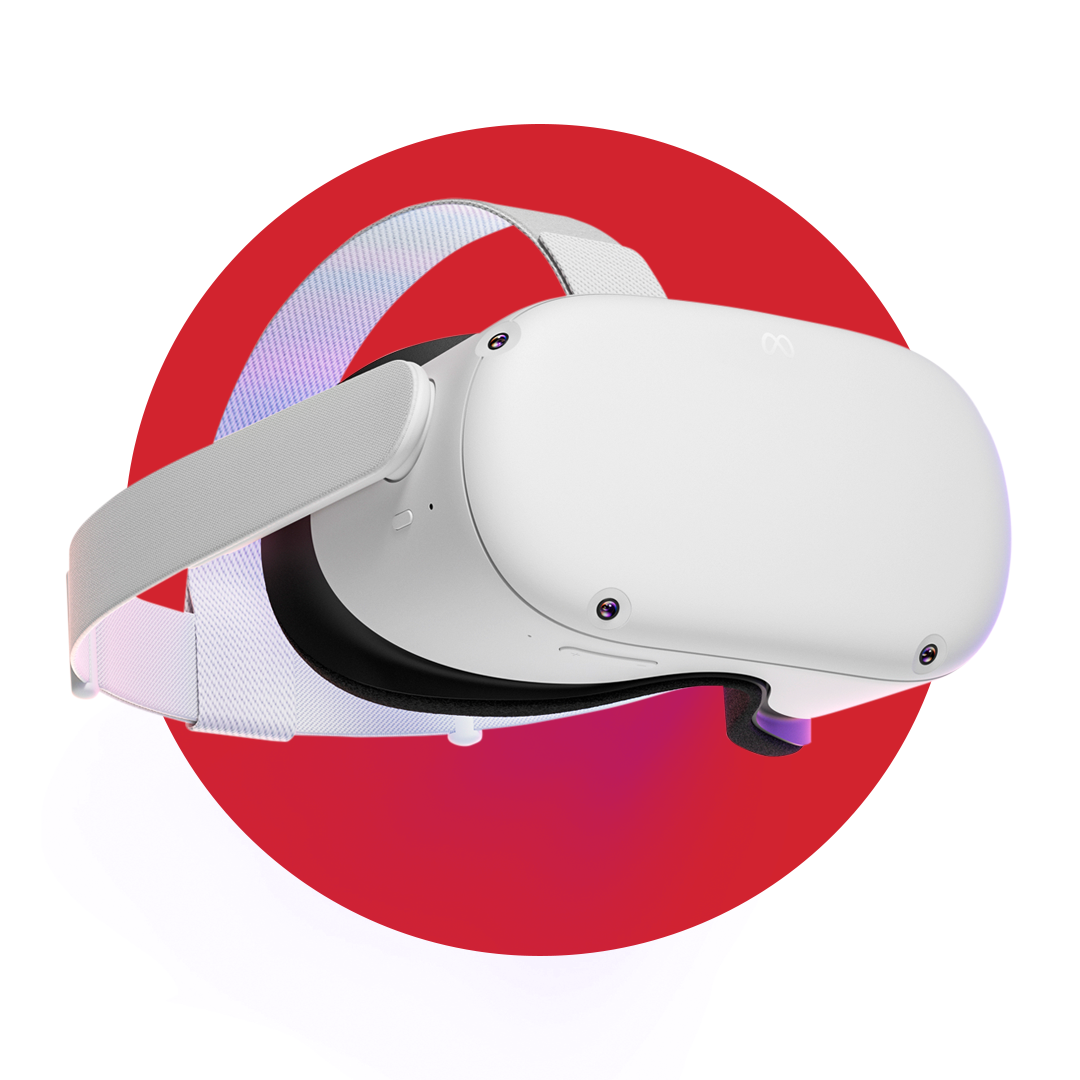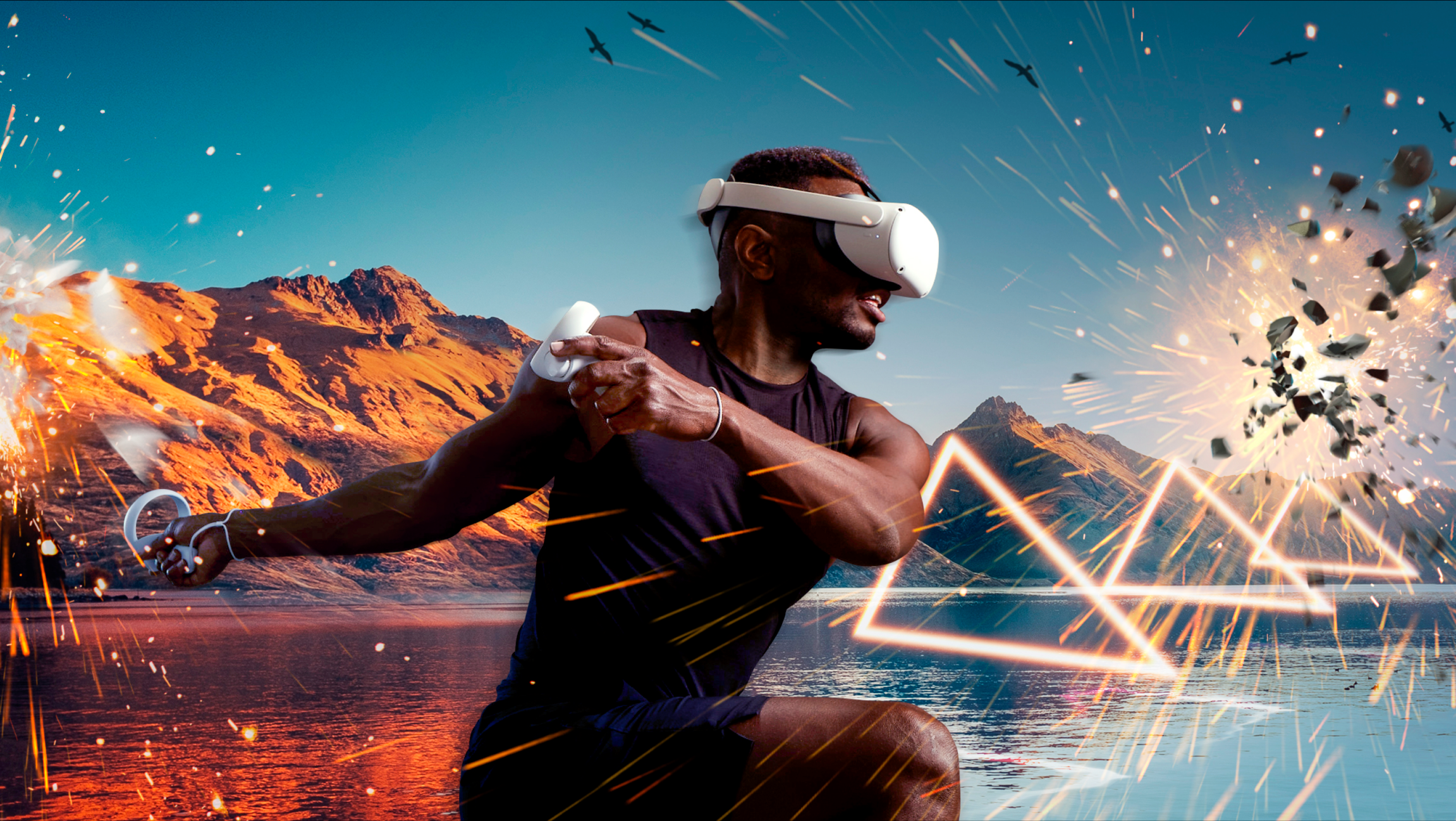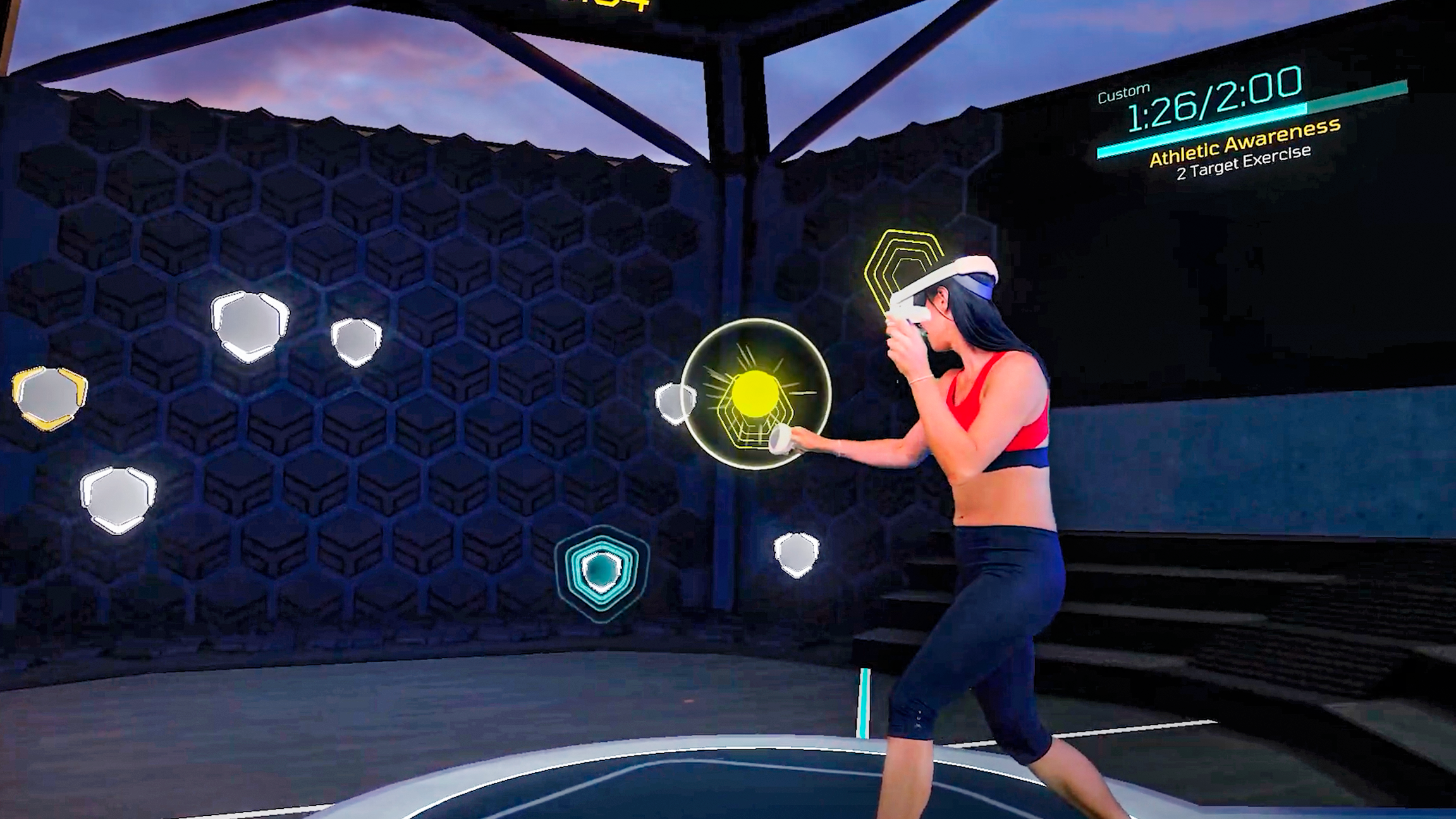MY JOURNEY TO the future of fitness begins with 30 seconds of time travel. I park my car at Venice Beach, adjacent to the most iconic Gold’s Gym on the planet. I admire the sprawling yard—where big dudes in skimpy tops deadlift in the sunshine—then walk half a block and light-years away to the headquarters of Supernatural, a leading virtual-reality fitness developer.
Ten minutes later, wearing a goofy Quest 2 headset, I’m boxing on the moon. A few minutes after that, I fire off jabs and throw uppercuts on the edge of Yosemite’s Taft Point, bobbing and weaving as Drake belts out “Headlines.” Working out in the metaverse is more literal than I’d imagined. Sweat trickles down my neck, and my heart rate edges north of zone 2. The sensors in the Quest’s handheld controllers tell the app how quickly and accurately I’m punching. Not bad for a newbie! I throw my first crisp left-right-left combination and glance over my left shoulder at Half Dome and the 3,000-foot drop from this snowy precipice.
As someone who previously has worked out while carrying an iPod, a Discman, and even a brick-sized Walkman, I find exercising with a Quest 2 to be a wondrously transformative experience in a moderately comical form. In a similar vein, the offerings presently available in the app marketplace still have an early-days feel. The options are far broader if you want to immerse yourself in first-person-shooter or porn action. Companies like Sony, ByteDance, and Apple are expected to introduce or push new headset products in the next year or so, and Meta is testing new data–collection methods that would allow users to play without holding controllers. Over a few weeks, I tried a range of the latest VR fitness games, including cycling in Paris with Holofit, stretching my glutes in Tahiti with FitXR, and doing hand-eye–coordination drills with Reakt. I can report that these early offerings are fun, sweaty, and surprisingly addictive.
During my visit to Supernatural HQ, I got to watch Leanne Pedante, the company’s head of fitness, record intros and segues and voice-over exhortations for a “monster” 40-minute flow session in a blue-screen studio. The making of each workout is like a modest film production, combining scripting, animation, live action, music curation, and extensive postproduction. Supernatural, which didn’t even exist at the beginning of the pandemic, now has nearly 70,000 users in its official community Facebook group.
One reason for the rise of exercise-forward VR apps is how they deliver gamified stealth fitness: The imaginative verisimilitude translates into a real-life metabolic boost that has been substantiated scientifically. Consider a 2022 study from researchers at San Francisco State, which concluded that subjects playing three active VR games had a measurable gap between their perceived exertion and their actual exertion—meaning the apps induced people to push harder than they realized.
The actual exertion might surprise you. It certainly surprised me that a 30-minute routine of throwing punches or chopping targets could get my heartbeat into EDM territory. No one knows this more precisely than Jimmy Bagley, Ph.D., an associate professor of kinesiology at San Francisco State and a cofounder of the Virtual Reality Institute of Health and Exercise. Using a metabolic mask, his team can measure the oxygen usage of people playing various active VR games and thus calculate how many calories are burned by sustained play. “Many people think these games are gimmicky,” says Bagley. “But now that we’re doing this testing, it’s clear that it is exercise.” Supernatural’s boxing is currently a top calorie burner in the VR space, according to Bagley’s research, with users able to burn around 12 calories per minute in a half-hour workout at the hard setting.
Is there a catch? You can’t lift weights with the existing technology, which for a lot of people means VR will at best supplement what they’re doing at the gym, on the playing field, or in an endurance sport. The headset itself isn’t cheap (about $400), and the better apps are subscription based. (Still, all are less costly than a gym membership.) Also, the Quest 2 can feel bulky when you’re moving around, especially on a spin bike, and can get really sweaty if you’re going hard.
There’s no evidence that injuries are a systemic problem with VR, but a few studies and the community forums for these apps contain a smattering of posts about overuse injuries. More sobering is the risk of damaging your home through your metaversal exertion. Market research out of the UK found that VR-related homeowner-insurance claims rose 31 percent in 2021, and there is a most entertaining Reddit thread cataloging household disasters wrought by the Oculus crowd. In my own living room, my 15-year-old son meandered to the side during a VR boxing routine and threw a memorable right cross into the wall, missing a glass cabinet door by inches. I can’t overstate the importance of creating a safe space before you unleash your inner Tyson Fury.
I had imagined that the dominant audience for these apps was youngish gamers who already owned a VR headset—the dudes always trying to convince their friends that gaming is a sport. And while this demographic is quite real, reps for both Supernatural and rival Holofit say that a surprisingly large cohort of older people are signing up, as are tens of thousands of men and women who are searching for a different way to work out at home. The truth is, lots of people struggle to find a routine that works for them. Maybe they dislike being on display at the gym—whether they’re heavy, trans, introverted, slow to pick up routines, intimidated by advanced gymgoers, or uninterested in returning to prepandemic habits. Perhaps they don’t feel like dealing with the cost and logistics of a gym membership or want to hole up inside when the weather is bad. For these people, a VR exercise routine is infinitely better than no routine at all.
In my case, a VR headset will probably never sit at the center of my fitness life. I love the experiential qualities of moving outside. I’m a fan of strength training and feel at home in IRL gym and bike cultures. But I already know that this tech will make my starting rotation. It’s a fun warmup for other activities, an effective tool for squeezing in exercise on busy days when my workout plans fall apart, and an engaging way to fully focus on a session of dynamic stretching or guided meditation.
I frequently travel for work and dread stepping into uninspired hotel gyms. VR could be my salvation. For example, early on the morning that I filed this story, I was whacked-out on time zones because of a corporate meeting at a hotel in Honolulu and was wide-awake before sunrise. There was no chance I was going downstairs to the gym. So I cleared some furniture, strapped on my gear, and did a Supernatural boxing workout. I was in an anonymous room in boxer briefs, but instantly I was jabbing beside a wintry tarn in Wyoming as Post Malone riffed about love lost. Then I picked up the pace amid the red rocks of Lake Powell as Juice WRLD put it in high gear. For 20 heart-thumping minutes, I was transported to a faraway place where exercise isn’t really work.
This story appears in the March 2023 issue of Men’s Health.
PETER FLAX is based in Los Angeles and writes about sports, adventure, and culture.







Comments are closed.